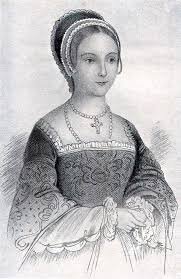 Elizabeth I
Elizabeth I
Queen of England
1533 – 1603 A.D.
Elizabeth, Queen of England, daughter of Henry VIII and Anne Boleyn. After her mother had been beheaded (1536) both she and her sister Mary were declared bastards, but finally she was placed after Prince Edward and the Lady Mary in the order of succession. In November, 1558, Mary died, and Elizabeth began her memorable reign of 44 years.
Her adviser through the whole of it was William Cecil, afterward Lord Burleigh, who had already been a minister under Edward VI, and continued for the rest of his life to be one of the chief councilors and ablest ministers of Elizabeth, to whom he was in many respects a congenial spirit.
Her first parliament approached her on a subject which, next to religion, was the chief trouble of her reign, the succession to the crown; they requested her to marry. She replied in a long speech, declaring her intention to live and die a virgin, and although there were many suitors for her hand, among them Phillip II of Spain, she never married. Contemporary gossip said that she was debarred from matrimony by a physical defect; and her cry when she heard that Mary Queen of Scots had given birth to a son is the most womanly thing recorded of Elizabeth.
The policy of her ministers, on the whole, was one of peace and economy. No war was undertaken in her reign for the sake o territorial conquest. Her diplomacy was swayed by innumerable changes of her mind, but she usually attained her ends. The chief political blunder of Elizabeth’s policy was the treatment of Mary Queen of Scots who in 1568 sought refuge in England, and after nineteen years’ confinement was condemned to be executed in 1587. This led to Phillip II to make war on England, and his pretext being to avenge the death of a Catholic queen, while his chief desire was to restore the Catholic faith. In 1588 his “Invincible Armada” sailed from the Tagus, and meeting the English fleet under Howard and Drake, was broken and destroyed.
With the defeat of the Spanish Armada Elizabeth’s work was done, and the last fifteen years of her reign was a period of gradual transition to the conditions of Stuart times. In 1601 a rebellion led by her favorite, the Earl of Essex, was crushed, and Essex beheaded. Elizabeth never forgave herself his death; he was the last and the most wilful but perhaps the best of her favorites, and his tragic fate deepened the gloom of her closing years.
In the long reign of Elizabeth the true greatness of England begins, for besides its political glories, her reign was the gold age of English literature. If all else could be forgotten, it would be remembered as the age of Shakespeare, Bacon and Spenser.
Under Frobisher, Drake and Raleigh maritime adventure began, the foundations of the British navy were laid. The Royal Exchange of London was opened, and in the charter to what became later the East India Company may be seen as one of the beginnings of the vast colonial British empire.
As a sovereign Elizabeth is entitled to her surroundings, and as an absolute ruler, as to the great extent she undoubtedly was, she must have her share of praise for the good that was done in her name. She may fairly be considered the first constitutional English monarch, and her reign may be said to mark the transition from medieval to modern England.
~*~
Reference: Famous Women; An Outline of Feminine Achievement Through the Ages With Life Stories of Five Hundred Noted Women By Joseph Adelman. Copyright, 1926 by Ellis M. Lonow Company.

